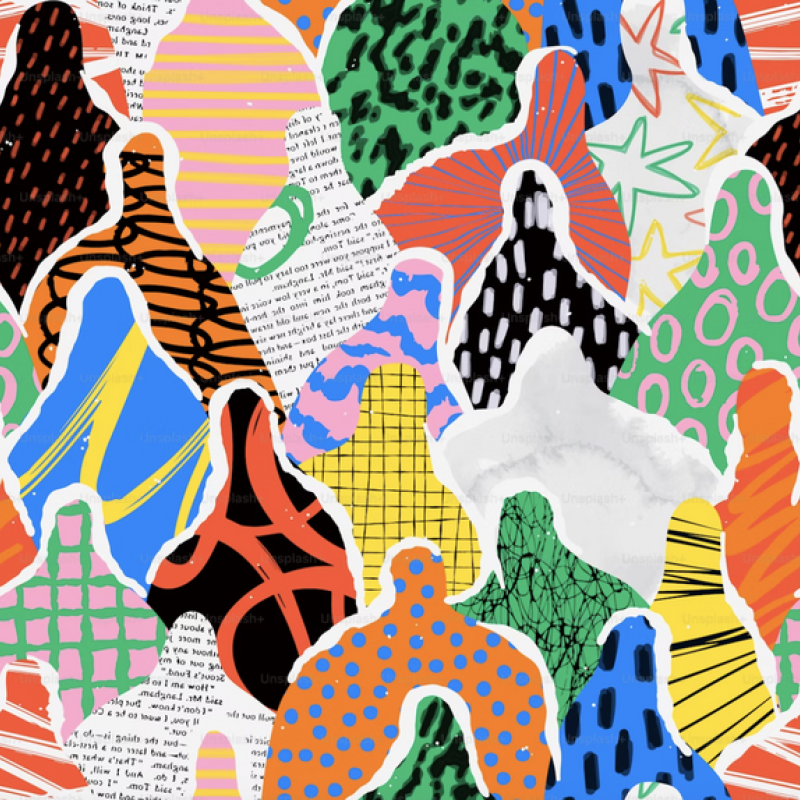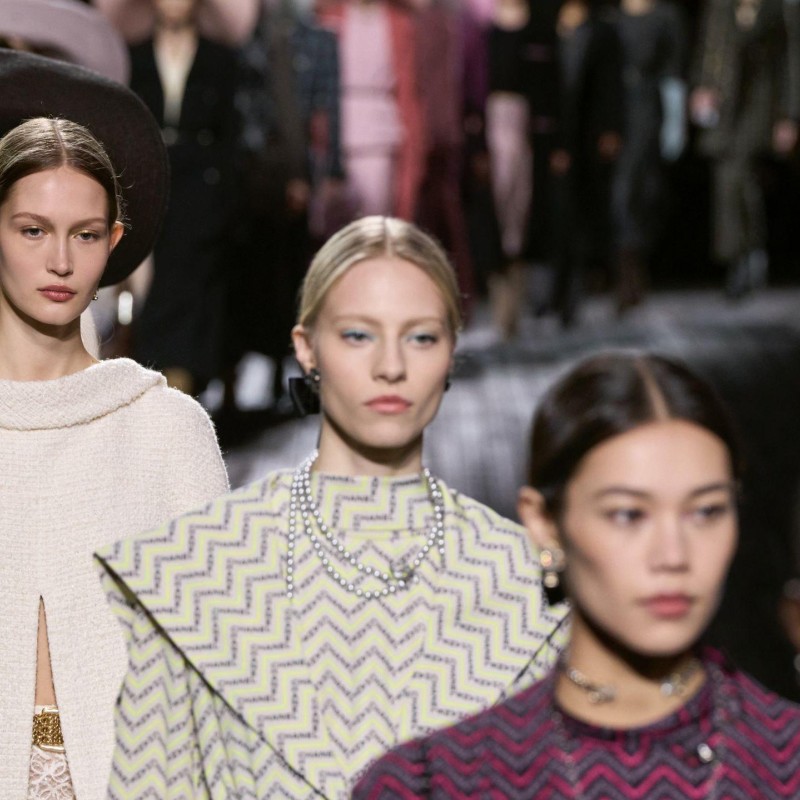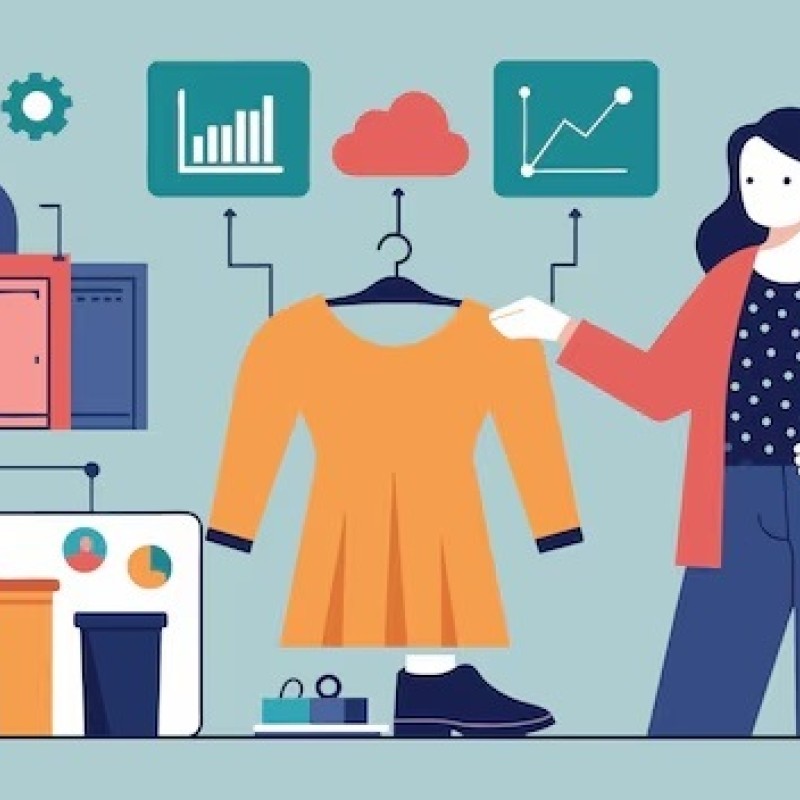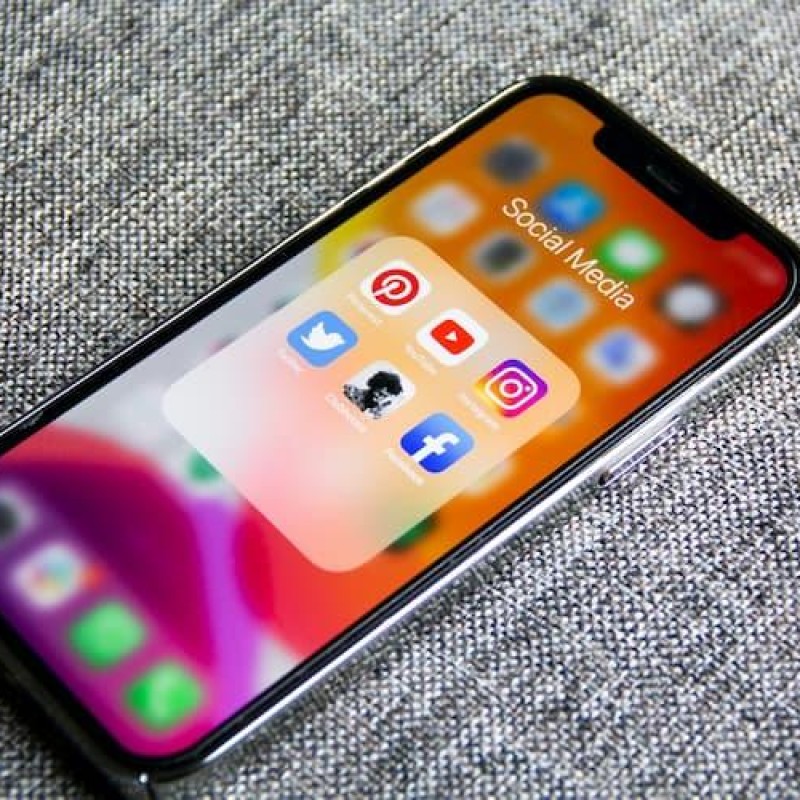Artificial Intelligence (AI) is being increasingly used across the world in a variety of industries and sectors.
Some businesses using AI technology that you’ll be familiar with include Google, Amazon, Siri, Netflix and Tesla.
The fashion industry might not be the first that springs to mind when you think about AI, but recent developments have shown that it’s an area set to take the sector by storm.
It’s been predicted that AI in retail will be worth $19 billion by 2027. The likes of Balenciaga have already had successes using the technology and it won’t be long until many other fast-fashion and luxury brands follow suit.
Read on to discover about how AI is transforming the fashion industry and the trends to watch out for this year.
Artificial Intelligence, otherwise known as AI, is intelligence demonstrated by machines as opposed to natural intelligence displayed by humans.
AI technology is used when machines mimic the cognitive functions associated with the human mind, such as problem solving and learning. Think Siri, when you ask the ‘bot’ questions. And Alexa, when you ask ‘her’ to play your favourite song.
Through the pandemic the world turned virtual, and online shopping became more popular than ever. This is when AI in the fashion industry really took off. The technology was used to enhance the online shopping experience, such as allowing shoppers to ‘try clothes on’ and personal shoppers enticed customers to the checkout.
Two examples of brands who have benefited from investing in AI technology for their online shops include:
1. The Yes
Popular fashion app The Yes, uses AI to personalise a customer’s shopping experience online.
It uses the technology to pull items of clothing from brand and retailer websites which matches the customer’s profile – a profile which is built up through a series of questions about the customer’s preferences, price range and size, when the app is downloaded.
Through the shopping journey customers are encouraged to ‘like’ or ‘dislike’ recommended items to enable the app to continually improve their shopping experience. No two recommendations are ever the same, making it a unique experience for every customer.
2. Bollé
In 2020, sports brand Bollé launched Volt+, its first sunglasses lens developed with AI – and one of the most technologically advanced lenses in the marketplace.
The brand also developed a new way for customers to try and buy sunglasses, through its first augmented reality digital ad campaign: ‘Experience the Power of Colour’.
The technology uses Instagram filters to enable customers to try the glasses on to see how they look. They can also flip from selfie view to front-facing view to see how the world looks whilst wearing them, with the glasses adapting to real-world lighting and surroundings.
If the customer likes what they see, they can then purchase the glasses via the Instagram platform. Pretty slick!
AI is also being used by retailers to predict what customers want to wear and buy. Typically, trend forecasting is labour-intensive involving manual or digital data collection and analysis from fashion designers and brands. But AI can now circumvent this.
Startup Finesse is one company using AI to scour the internet to predict what the next fashion trends are. It takes data directly from customers and then passes this information onto brands giving them easy access to insights that allow them to plan future styles and quantities.
H&M is also using AI technology to spot trends by examining supply and demand, then allocating the right amount of stock to each store, and in turn reducing the amount of wasted clothes.
In essence AI has the capabilities to save retailers billions every year by making operations and processes more efficient.
The use of AI powered machines and robots on the production line is saving time and energy – and therefore creating huge cost savings for brands and retailers.
Robots can work faster and more accurately than humans which is reducing salary costs for workers – and costs when mistakes are made. Not only that, but the AI technology can also detect faults in fabrics at the start of the production process.
At this present time there are many pros for companies to use AI-powered robots, so be prepared to see more robotic-colleagues in the near future.
The use of 3D modelling software accelerated in the pandemic. Virtual changing rooms allowed customers to try clothes on from their homes, and virtual photoshoots allowed retailers to use virtual models to showcase their collections.
However, 3D modelling software is gearing up in retail stores too. Smart Mirror is turning cringe-worthy moments in a changing room into a more pleasant experience.
The interactive mirrors (installed in changing rooms) allow shoppers to change the lighting, contact a stylist, and attach any items that have been tried on to a personal profile for future visits. Using the touch-screen glass mirror, customers can try on different sizes and colour options and receive personalised mix and match options.
And if that wasn’t impressive enough, there has been a surge in computer generated models. Shudu Gram is one of the most popular computer-generated models in the world with an Instagram following of over 200,000 people. Virtual models like Shudu help designers show their creations globally, and are especially useful when real life models can’t travel when restrictions are in place. They also help reduce waste by showcasing clothes that haven’t yet been manufactured – and may not need to be.Genius!
‘Metaverse’ is a word we are hearing more and more. Facebook recently announced its change of name to ‘Meta’, committing to billions of pounds of investment into building the metaverse. The metaverse is an alternative universe, a 3D reality space accessed through personal terminals. Through the use of AI, fashion is entering the metaverse in a big way.
Nike has just made a major investment in the metaverse. The big-name sportswear brand recently announced that it is set to acquire RTFKT, a leading virtual fashion platform, best known as a creator of virtual trainers. RTFKT has experienced explosive growth since it started. Its monthly revenue in May 2021 was $4.5 million - up from $600,000 annually in 2020!
Dress-X has also been experimenting with digital clothes. Yes, we did say digital clothes! The trendsetting company offers the opportunity to buy digital clothes for your online persona or avatar. By uploading a photo of yourself, you can buy a garment and see yourself wearing it. That item of clothing may never actually hang in your wardrobe, but you can still impress your friends with the latest fashion, while reducing textile waste at the same time. What’s not to love?
Balenciaga also achieved a first in the fashion industry in September 2021 by dropping a collection into the popular online game, Fortnite. In a virtual version of an actual Balenciaga boutique, players purchase digital clothing, inspired by real-life Balenciaga pieces. In the Strange Times hub, where the virtual store is located, players can hang out with other gamers and even change their outfits in the changing booths.
And, Balenciaga’s ingenuity didn’t stop there. At Paris fashion week, it treated guests to a 10-minute episode of The Simpsonsinstead of a live catwalk show. In the special episode, Homer and Marge Simpson walked the runway in the latest Balenciaga pieces and poked a little fun at the fashion industry. It was an entertaining and refreshing start to the season after the gravity of the previous 18 months.
The digital-first innovations discussed above will transform the fashion industry as we know it. But what can we expect from Artifical Intelligence in 2022 and beyond? Where will the focus be?
Given that the fashion industry continues to be one of the world’s biggest polluters, AI will no doubt be the solution to help reduce some of the industry’s extensive carbon footprint.
Trend forecasting and virtual photoshoots reduce the need for samples and for models to be flying round the world, and the quantity of clothing being manufactured will be greatly reduced through the rise of digital fashion. This will all in turn have a huge impact on the industry’s global carbon dioxide emissions.
There are innovators working around the clock on the sector’s environmental issues, so watch this space for new technologies launching to help businesses meet strict sustainable targets.
As inconceivable as it was in the past, when creativity was thought to stem only from the human mind, using emotion rather than logic, AI is now being used to take creativity and innovation to new heights. Not just in fashion design, but in object design too - cue the chAIr Project in 2018 where a robot was able to produce a design for an aesthetically pleasing chair, and the extraordinary exhibition last year in the Gallery Vossen in Paris, inspired by artist Robbie Barrat, but painted by machine.
And, despite scepticism towards using AI in fashion, it seems safe to say that the technology is here to stay. Its capabilities have only just scratched the surface. An exciting area for discussion, that’s only going to get more exciting!
Want to read more articles about technology in fashion? Check these out too:
Use our expertise as a top fashion recruitment agency to find your next role beyond your expectations.





Beyond Talent
Fashion Recruitment Agency
Specialising in Senior and Executive recruitment for the luxury fashion, lifestyle and beauty industries worldwide.
Head Office Address
20-22 Wenlock Road, London, N1 7GU
Contact Us